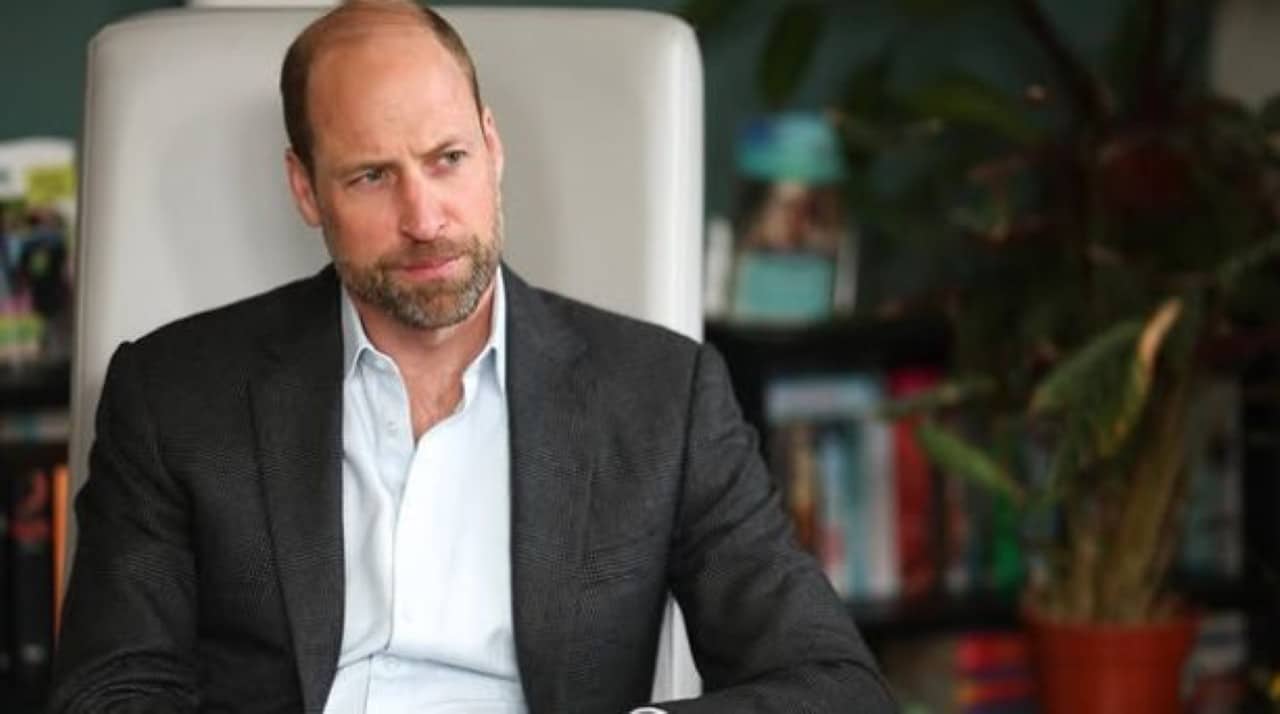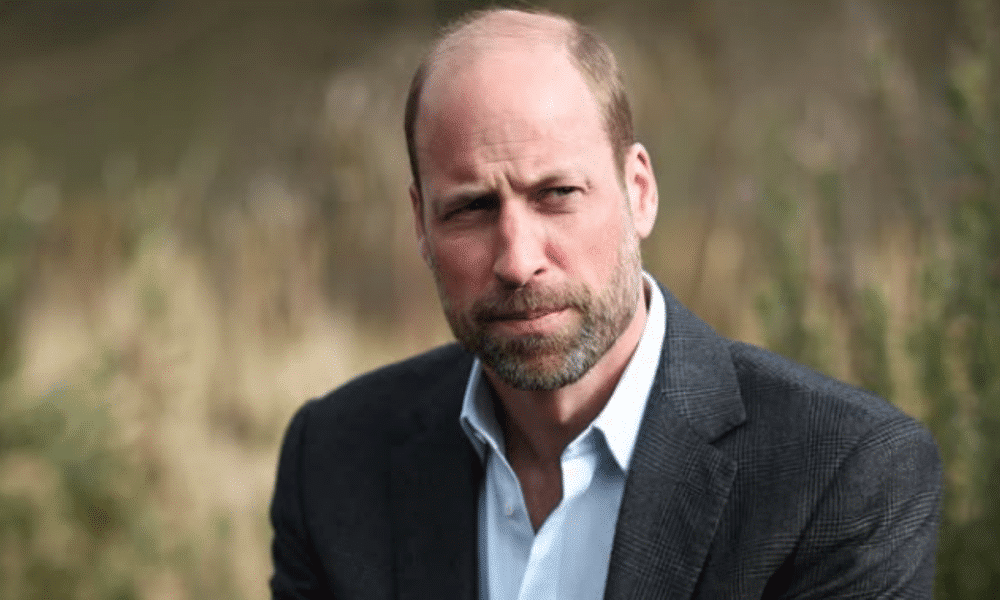Share
Tweet
Share
Share
Prince William, heir to the British throne, has displayed a more aggressive and formal demeanor behind the scenes at the Palace, according to Ian Pelham Turner, a former royal photographer who worked with the Royal Family since Princess Diana’s time. In an interview with The Mirror US, Turner revealed that William, now in his 40s, insists on being addressed as “Sir” and adopts a rigid posture, contrasting with the sensitive image he projects in public engagements. The revelation comes amid family tensions, including his absence from reconciliation meetings involving Prince Harry and King Charles. These changes in the prince’s temperament have sparked debates about his preparation for the throne and the internal dynamics of the monarchy.
The information, published on August 9, 2025, offers a new perspective on William’s behavior, with sources close to him noting he has become more demanding with his staff. The former photographer, who worked with the royals for decades, reported incidents suggesting a significant transformation in the prince. Additionally, William’s absence from key Royal Family events has fueled speculation about his relationship with Harry.
- Observed changes: William was known for being approachable in his 20s and 30s.
- Current demands: He insists on formalities, such as being called “Sir.”
- Family context: His absence from meetings suggests tensions with Harry and Charles.
The news has resonated across international outlets and social media, with reports indicating that William’s team finds him, at times, “very aggressive.”
Transformation in William’s temperament
William’s behavior has shifted markedly over the years. According to Ian Pelham Turner, the prince, once seen as laid-back, now adopts a more authoritative stance. This change aligns with his proximity to the throne, as he is first in line after King Charles III. Turner noted that in their 20s and 30s, William and Harry were addressed informally by their first names. Today, William demands formality, surprising former collaborators.
The ex-photographer reported that William’s team faces constant pressure, particularly in charity projects. A volunteer for a housing-focused charity revealed that the prince repeatedly questions fundraising totals, showing a strong focus on financial outcomes. This approach has been interpreted as a sign of his preparation for greater responsibilities but also as a mark of rigidity.
- Growing formality: William insists on being addressed as “Sir.”
- Backstage pressure: Staff report constant demands and an aggressive tone.
- Focus on results: Concerned with fundraising outcomes in charity projects.
Absence from reconciliation meetings
One of Turner’s most discussed points was William’s absence from a recent London meeting involving representatives of Prince Harry and King Charles. Described as a reconciliation effort, the meeting lacked participation from William’s team, which was seen as “revealing.” According to the ex-photographer, a photo taken on a restaurant balcony during the event was an indirect message to the prince, suggesting the Royal Family is seeking to ease tensions without his direct involvement.
The relationship between William and Harry has been strained since 2016, when William expressed concerns about Harry’s relationship with Meghan Markle. The rift deepened in 2020 when Harry and Meghan stepped back from their royal roles. Since then, encounters between the brothers have been rare, with the last recorded in September 2022, after Queen Elizabeth II’s death.
- Family tensions: William and Harry have had few encounters since 2020.
- London meeting: William’s absence was seen as a message.
- Public gesture: The balcony photo carried symbolic intent.
- History of rift: Disagreements began in 2016 over personal matters.
 Prince William – Photo: InstagramPublic image versus behind-the-scenes
Prince William – Photo: InstagramPublic image versus behind-the-scenes
William’s public image is carefully crafted as a sensitive and dedicated prince, especially in causes like mental health and housing. However, Turner’s revelations suggest a contrast behind the scenes. The prince, once praised for his accessibility, now appears to adopt a stricter style, influenced, according to analysts, by the pressure of his future role as king.
This shift is also evident in his interactions with the media and public. While William maintains a polished demeanor in official events, reports indicate he is less tolerant of criticism or staff errors. This duality has sparked debates about how the prince will balance his public image with leadership demands.
- Sensitive image: William is known for supporting social causes.
- Strict backstage: Staff face pressure for results.
- Throne preparation: Changes reflect greater responsibility.
Repercussion and historical context
Turner’s statements come at a delicate moment for the Royal Family, grappling with challenges like King Charles and Kate Middleton’s cancer diagnoses. These events have placed William under greater scrutiny and prominence. Harry and Meghan’s absence from the monarchy’s core intensifies the pressure on William to maintain the institution’s stability.
Historically, the British monarchy has faced image crises, such as during Charles and Diana’s marriage. Revelations about William reignite discussions about how the new generation will handle the weight of tradition and modern expectations. His demand for formality, like being called “Sir,” may signal a return to older practices, contrasting with Harry’s more approachable style.
- Delicate context: Charles and Kate’s illnesses increase pressure on William.
- Past crises: The monarchy faced image challenges with Diana.
- Tradition vs. modernity: William’s formality contrasts with Harry’s approach.
- Public scrutiny: Revelations fuel debates about leadership.
Social media and media reactions
Turner’s statements have generated widespread buzz on social media and in international media. Users on platforms like X have highlighted William’s shift, with some calling him “rigid” and others defending his stance as justified by royal pressures. Outlets like The Mirror and Estação Plus reinforced the claims, noting that William’s team struggles with his temperament.
Despite the criticism, some see William’s formality as preparation for his reign. The British monarchy historically demands an authoritative image, and the prince appears to be aligning with that role. However, the contrast with his more accessible public persona may raise questions about his authenticity.
- Online debate: Users divided between criticism and support for William.
- Media coverage: Outlets reinforce reports of rigid behavior.
- Leadership image: Formality seen as preparation for the throne.
Family perspective and monarchy’s future
William’s absence from reconciliation efforts with Harry and Charles suggests ongoing family tensions. Sources close to the royals, cited in outlets like Aventuras na História, describe the rift between the brothers as “difficult and sad” but not “irreparable.” William’s formal stance and demands may indicate an effort to consolidate his authority amid uncertainties in the monarchy.
Meanwhile, Kate Middleton and the couple’s children—George, Charlotte, and Louis—remain key to the family’s public image. William has emphasized giving his children a normal childhood, but his own transformation suggests a delicate balance between tradition and modernity.
- Harry’s relationship: Tensions persist, but reconciliation is possible.
- Kate’s role: The princess maintains a positive family image.
- Children’s future: William balances tradition with normalcy.
- Monarchy in transition: William prepares for a challenging reign.

